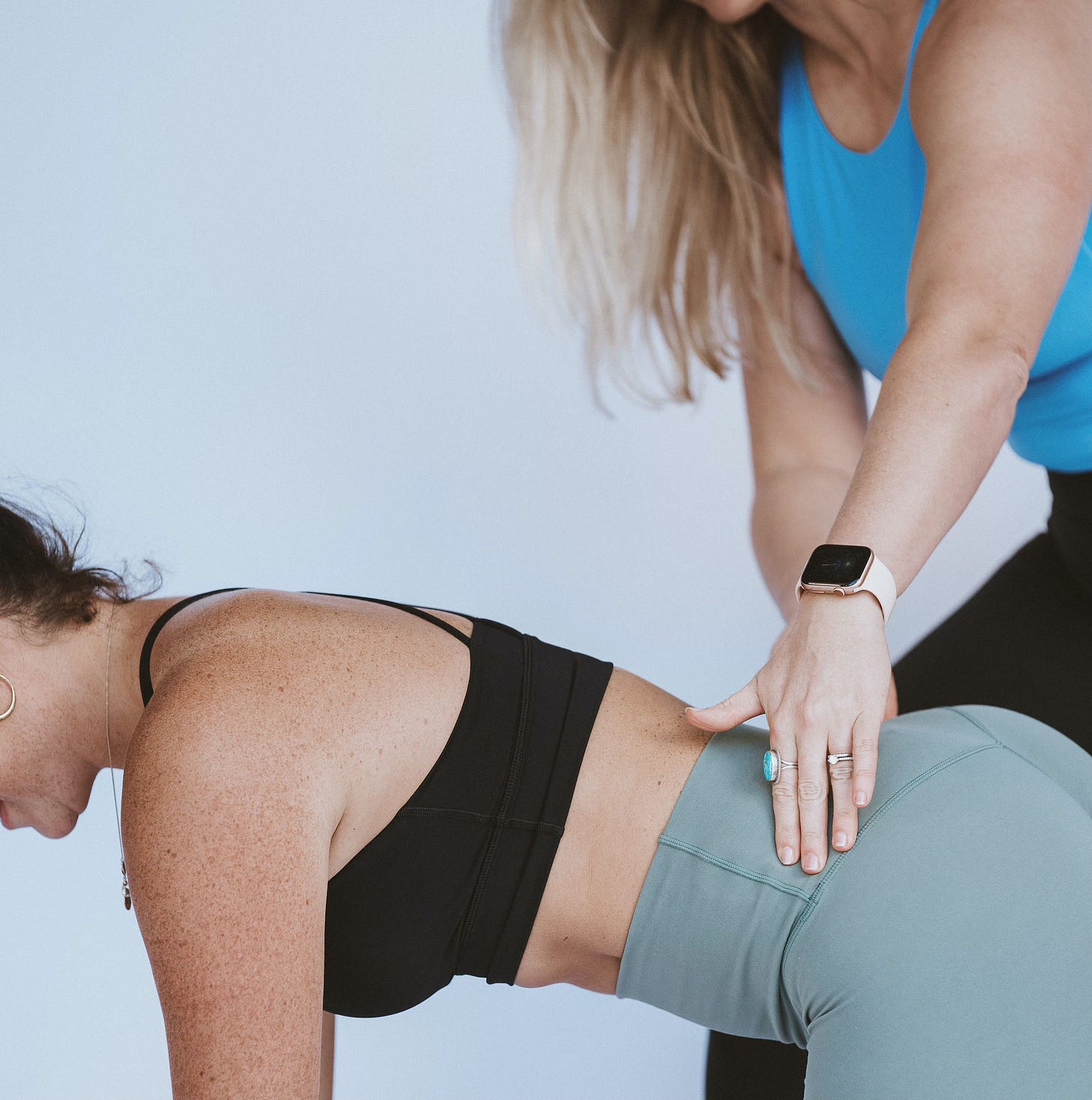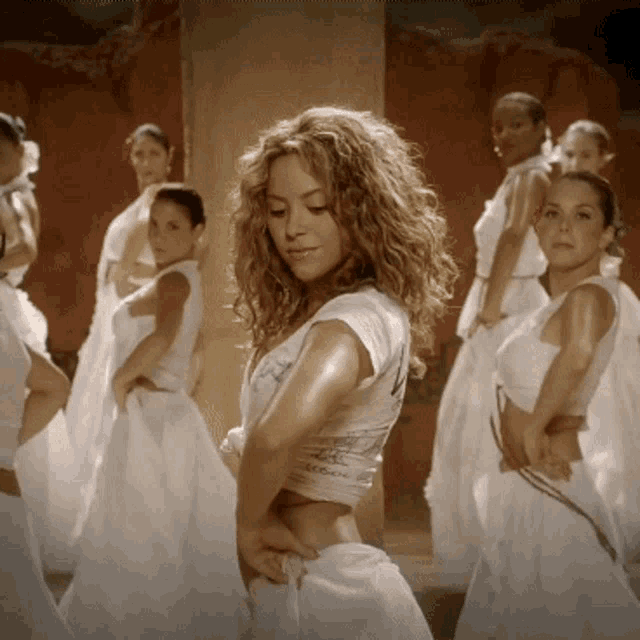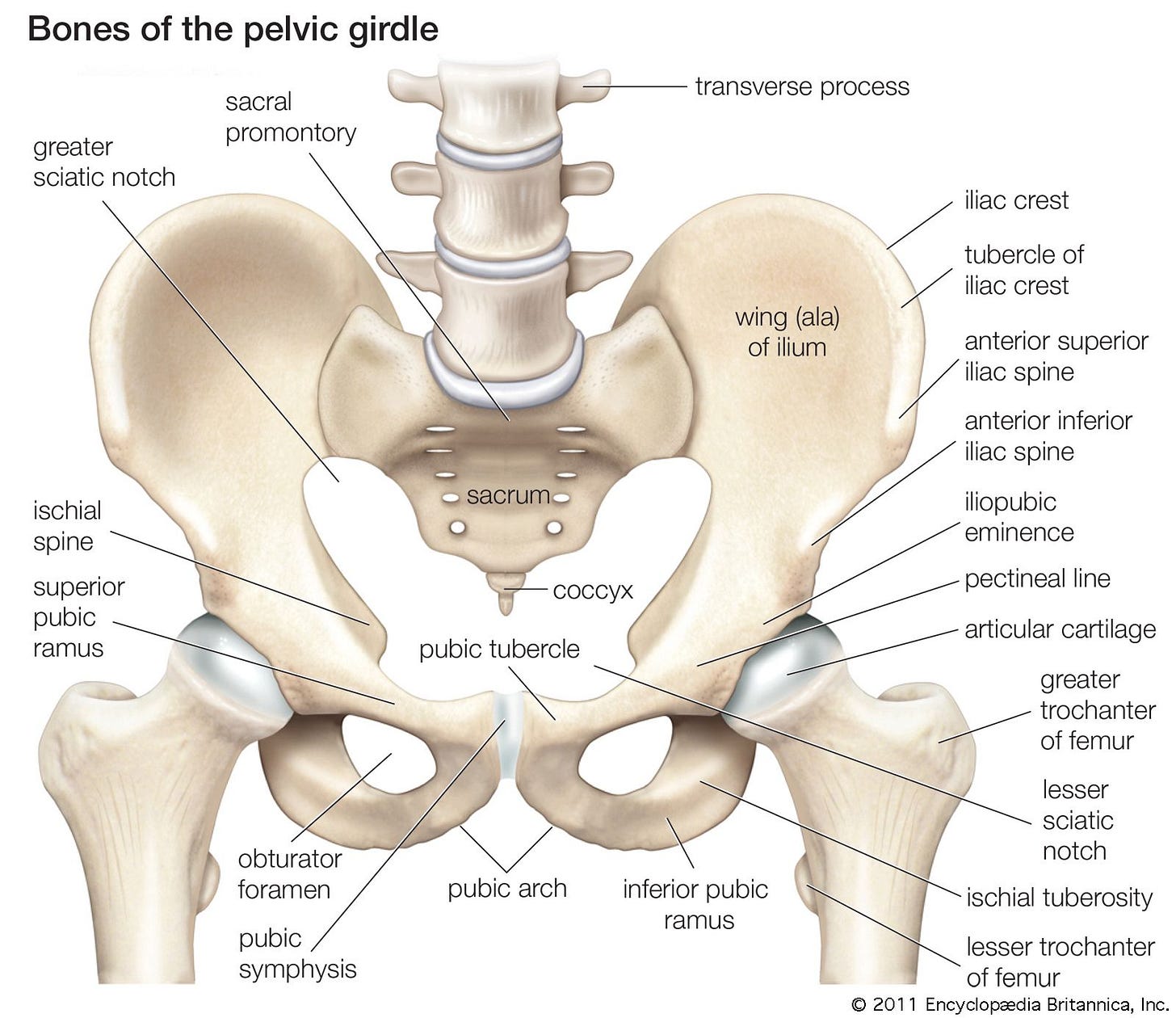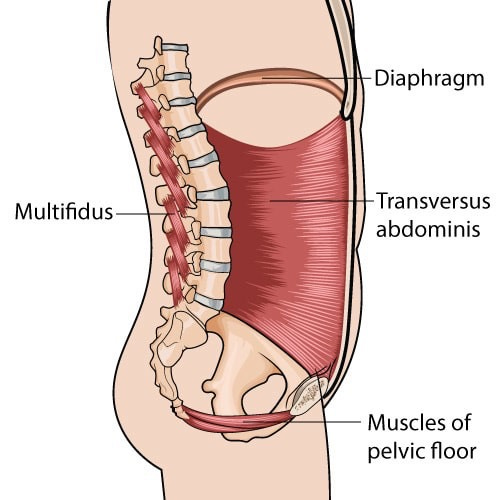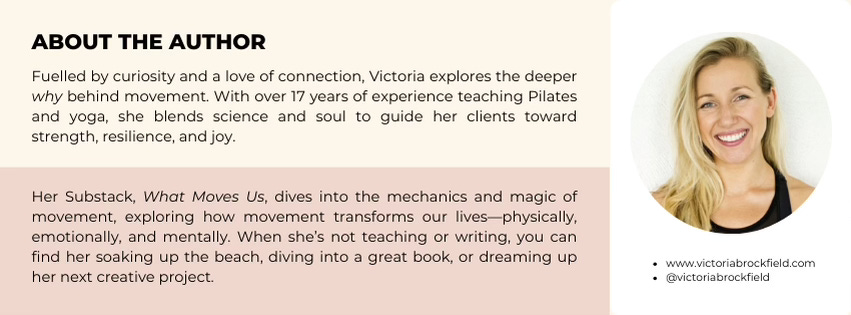Learning How To Move Your Hips is a Game-Changer for Core Strength
Why intentional pelvic movement (ie. moving like Shakira in slow motion) deserves your attention if you want to up-level your core strength.
When it comes to building core strength, pelvic mobility often gets overlooked in favor of flashy exercises. But don’t let the subtlety of these movements fool you - improving pelvic mobility can transform how you move, reduce discomfort, and build true core strength.
After all, Shakira did say that the hips don’t lie, and she’s right - they really don’t. Stiff hips often tell me a lot about compensatory patterns in client bodies, but they’re an easy fix with intentional movement. Let’s unpack why pelvic mobility is so essential and how to incorporate it into your movement practice.
There’s a Lot More than Junk in your Pelvis and Trunk
Your pelvis isn’t just the base of your spine—it’s the central hub of your body’s movement and stability. These two anatomical images give us a glimpse into why pelvic mobility matters.
This first image shows the bony structure of the pelvis, which connects your spine to your legs. The ability of these bones to move relative to each other in different planes—forward, backward, side-to-side, and with rotation—is what creates pelvic mobility. Think of it as the foundation that allows your body to absorb force, stabilize, and transfer energy through your core.
This second image highlights the muscles surrounding the pelvis, including the deep stabilizers like the transverse abdominis, pelvic floor, and multifidus. These muscles work in harmony to support movement and maintain balance. When these muscles are tight or weak, pelvic mobility can be restricted, leading to compensatory patterns in the hips and lower back.
The diaphragm gets a special mention here because it works in harmony with the pelvic floor to regulate pressure within the core.
As you inhale, the diaphragm descends, and the pelvic floor responds by lengthening; as you exhale, both rise to create stability and support.
This relationship is key to effective breathing, core engagement, and even pelvic mobility. When the diaphragm and pelvic floor are out of sync, it can lead to compensatory patterns, making mobility and stability harder to achieve.
Together, these structures create a dynamic system. By improving pelvic mobility, you’re not just moving your pelvis—you’re enhancing the way your entire body functions. It’s the key to creating a strong, resilient core and a foundation for smooth, efficient movement.
How Much Movement do we have in the Pelvis?
If you want to move your pelvis like Elvis, let’s get clear on what we’re working with:
Anterior Tilt: Your pelvis tips forward toward your feet, creating an arch in your lower back.
Posterior Tilt: Your pelvis tips backward toward your face, flattening your lower back toward the mat.
NB: These movements occur in the sagittal plane, with approximately 20–40 degrees of movement depending on flexibility and control.Lateral Tilt: Your pelvis tips side to side, with one hip lifting higher than the other (think: hip hike).
NB: This occurs in the frontal plane, with around 10–15 degrees of movement on each side, depending on muscle length and strength.Rotational Movement: Your pelvis twists gently from side to side, where one ASIS moves forward as the other moves back (linked to spinal and hip mobility).
NB: This happens in the transverse plane, with approximately 5–10 degrees of rotation in each direction. The hip bones pivot around the sacroiliac joint (SIJ), creating a small but vital motion for functional activities like walking efficiently.
Allowing your pelvis to move freely in these directions—and focusing on smoothing out any sticky sensations in these patterns—creates more balanced, adaptable muscle tone in and around the pelvis.
Differences Between Male and Female Anatomy
Oh yeah, and the pelvis doesn’t play by the same rules for everyone—gender differences do influence structure, stability and range of motion in movement.
Structural Variations
Females typically have a wider, more oval-shaped pelvis (to allow for childbirth), while male pelvises are narrower and heart-shaped.
This structural difference gives women slightly more range in anterior/posterior tilt and lateral tilt, as the broader shape allows for more mobility.
Muscle Length and Soft Tissue
Females often have more laxity in connective tissues due to hormonal influences (e.g., estrogen and relaxin), especially during certain life stages like pregnancy. This can lead to a greater range of motion in the pelvis.
Males, on the other hand, tend to have greater pelvic stability due to a narrower pelvis and stronger surrounding musculature.
Functional Impact
Females might experience more variability in pelvic movement during different phases of their cycle (thank hormones!).
Males generally have a more stable pelvis, which might mean less compensatory movement but also less flexibility.
Why It Matters
For females, this extra range can be a blessing for dynamic movement but sometimes a curse when stability is compromised (e.g., during pregnancy or with hypermobility).
For males, less movement can mean more effort is needed to increase flexibility or address compensatory patterns.
Why Pelvic Mobility is the new King of Rock(ing)
Ok, Elvis the Pelvis, we love you, but there’s a new King of rocking and rolling. Pelvic mobility is the ultimate backstage pass to better movement, core strength, and freedom from stiffness. Whether you’re grooving on the dance floor or simply walking to the shops, your pelvis is the star of the show—connecting your upper and lower body while stabilizing and supporting every move you make.
Think of pelvic mobility as your body’s secret weapon: the more fluid and adaptable your pelvis is, the more efficiently your whole body moves. And just like Elvis, it works best when it’s rocking in all directions—front to back, side to side, and with a twist for good measure. Here’s why I’m such a fan of adding pelvic mobility exercises to my client programs:
They Wake Up the Deep Core
Pelvic mobility exercises wake up your deep core muscles (aka key stabilisers) (transverse abdominis, pelvic floor, and multifidus) while enhancing coordination with the glutes and hip flexors. These deep stabilizing muscles are the foundation of core strength and spinal health.They Teach Core Coordination
Your core doesn’t work in isolation. Smooth pelvic movements in all directions build harmony between your abdominals, glutes, hip flexors, and lower back, teaching your body to move as one cohesive unit. A mobile pelvis allows for smoother transitions (aka greater movement efficiency) and helps distribute load evenly, reducing strain on the lower back and hips.It Relieves Tension and Pain
Restricted pelvic movement is often linked to tight hip flexors, lower back pain, or even discomfort in the knees. Mobilizing the pelvis can ease these issues - for instance, a gentle posterior tilt helps to lengthen the spinal extensors and stretches tight hip flexors, helping reduce lower back strain.They Lay the Groundwork for Complex Moves
By exploring all planes of motion, you train your body to maintain stability and control during complex movements. Mastering pelvic tilts sets you up for success by enhancing dynamic stability in more advanced exercises like roll-ups and planks.They Help You Find Neutral Spine
By exploring anterior and posterior tilts (aka end ranges of pelvic motion), you learn where your neutral alignment is—a useful blueprint for finding alignment in balance exercises such as handstands.It Supports Functional Movement
Pelvic mobility isn’t just for Pilates—it’s foundational for walking, running, lifting, and even sitting with better posture.
Movement 101: Mastering the Pelvic Tilt
Pelvic tilts are all about controlled movement through an anterior/posterior range, teaching you how to connect with your core and find your neutral spine. Move slowly and mindfully doing these, focusing on the sensation of movement rather than range.
Set Up: Lie on your back with knees bent, hip width apart, feet flat on the floor, and arms by your sides.
Find Your Neutral: Place your hands onto your hipbones (heel of palms on ASIS, and fingertips to pubic bone) and find the level point between fingertips and thumbs as you look forward to find your neutral spine position.
NB: For most people (depending on the natural curvature of your spine), that will leave you with a small hollow beneath the lower lumbar portion of your spine, with the tailbone and lower posterior ribs still connected to the floor.
Tilt Forward and Back:
Inhale, gently tip the pelvis towards the feet, allowing the lower back to arch.
Exhale, gently tip the pelvis towards the ribcage, allowing the lower back to press into the floor, feeling the abdominals wrap in and the pelvic floor gently lifting.
Return to Neutral: Inhale as you release and return to neutral spine.
Repeat: Perform 8-10 slow, controlled repetitions.
💡 Pro Tip: Take a deep, expansive breath in through your nose, allowing your belly to soften and expand—this gentle release helps the pelvic floor relax fully. As you exhale through your mouth, imagine drawing your pelvic hammock upwards while your abdominals gently wrap in, like a corset hugging your center. This coordinated movement engages your deep core muscles, building both strength and control.
How to Incorporate Pelvic Tilts into Your Routine
Pelvic tilts are versatile and can be used in many ways:
Warm-Up: Start your workout with pelvic tilts to wake up your core and establish mind-body connection.
Rehab Tool: Ideal for clients with lower back pain, postpartum recovery, or anyone new to movement.
Building Blocks: Progress to more dynamic exercises like bridges, planks, or teaser once pelvic tilts feel solid.
If you’re looking for some simple at-home exercises to try, here's some of my personal favourites:
Supine pelvic tilts with a chi ball: Place a chi ball under your sacrum (that flat bony part at the base of your spine). This elevates your pelvis slightly, giving you feedback and helping you move with more control.
Seated Lateral Tilts: Sit on a Swiss ball and slowly lift one hip while dropping the other, then reverse.
Rotational Pelvic Circles: On hands and knees, gently circle your hips clockwise and counterclockwise. This movement can also be done supine with the chi ball under the hips, known as Pelvic Clocks - imagining your pelvis as a clock face, tilt the pelvis to 1 o’clock, 2 o’clock and so forth until you reach 12, then move anti-clockwise back to 12.
These exercises are all great for improving spinal mobility, releasing tension in the lower back, and enhancing control over your pelvic motion. It’s a fantastic way to build awareness of your full range of movement while gently activating your deep core muscles.
Ready to Tilt Your Way to a Stronger Core?
Pelvic mobility drills might seem super simple, but they’re a foundational move that deliver big results. Add them to your next workout and let your spine, abs and pelvic floor feel the difference!
I’d love to hear how it goes—drop a comment below or share your own favourite pelvic mobility exercises.
Paid Subscriber Perk
For paid subscribers, I’ve shared below a short video and excerpt from my ebook “The Main Method to Your Best Pelvic Floor”. This guide is packed with 77 exercises offering step-by-step instructions, accompanying videos, and tips to take your practice to the next level. It’s perfect for those wanting to improve pelvic mobility, increase pelvic floor awareness, or returning to exercise after a break or postpartum.
Upgrade your subscription below to get exclusive access to this and so much more!
End Note:
If you’d like to see more of these posts, please support me! I write part-time around my teaching schedule, alongside running workshops and writing ebooks. Your subscriptions funds my time in creating future editions, and subscribers get the opportunity to request topics for future posts.
Interested in moving with me? This year, I’m creating a series of ebooks, workshops and retreats, along with an online movement platform. You can sign up to my monthly newsletter to keep up to date here:
If you found this post thought-provoking, I would be so grateful if you could please share it with someone who might enjoy it too.
Keep reading with a 7-day free trial
Subscribe to What Moves Us to keep reading this post and get 7 days of free access to the full post archives.





